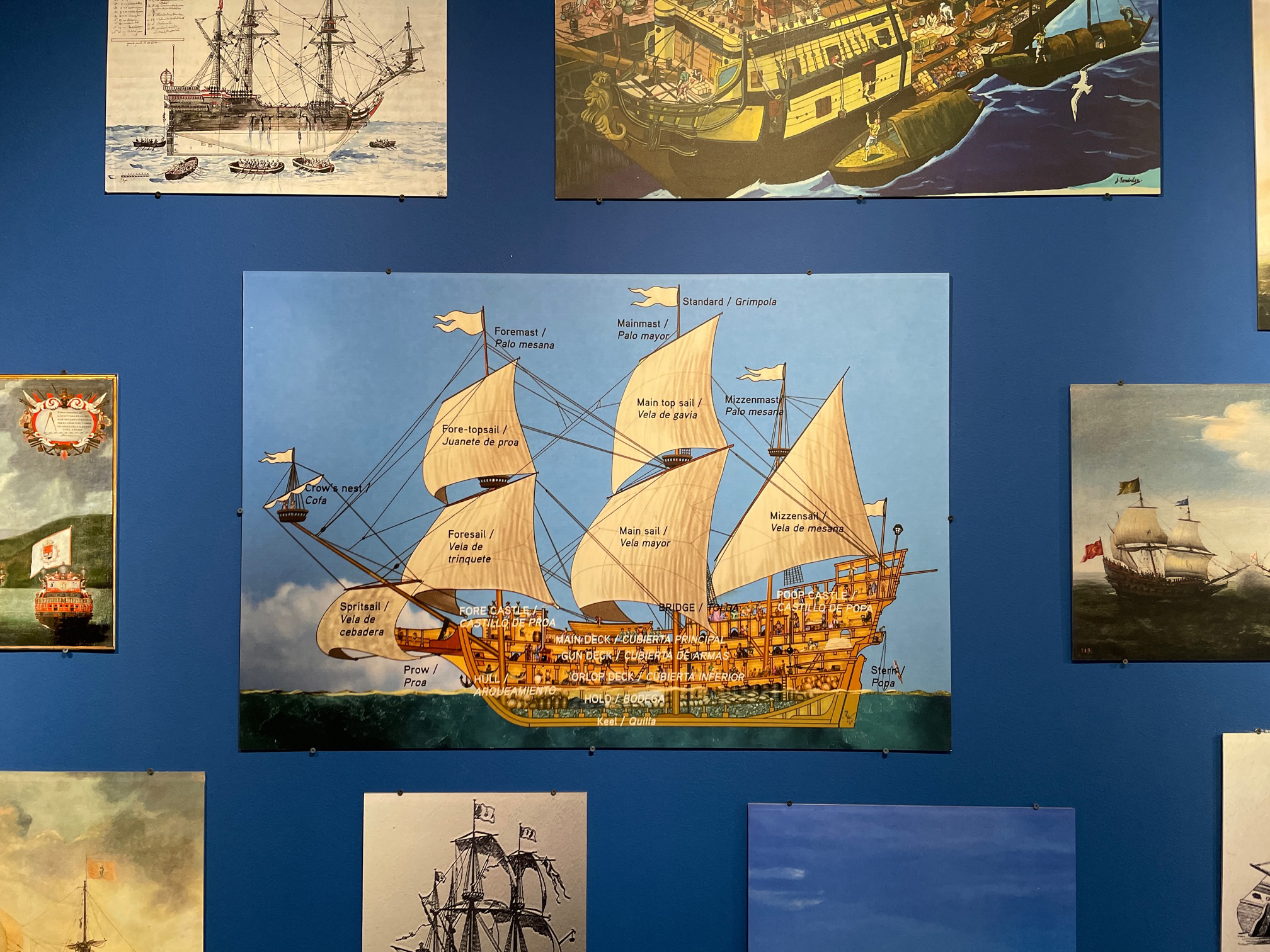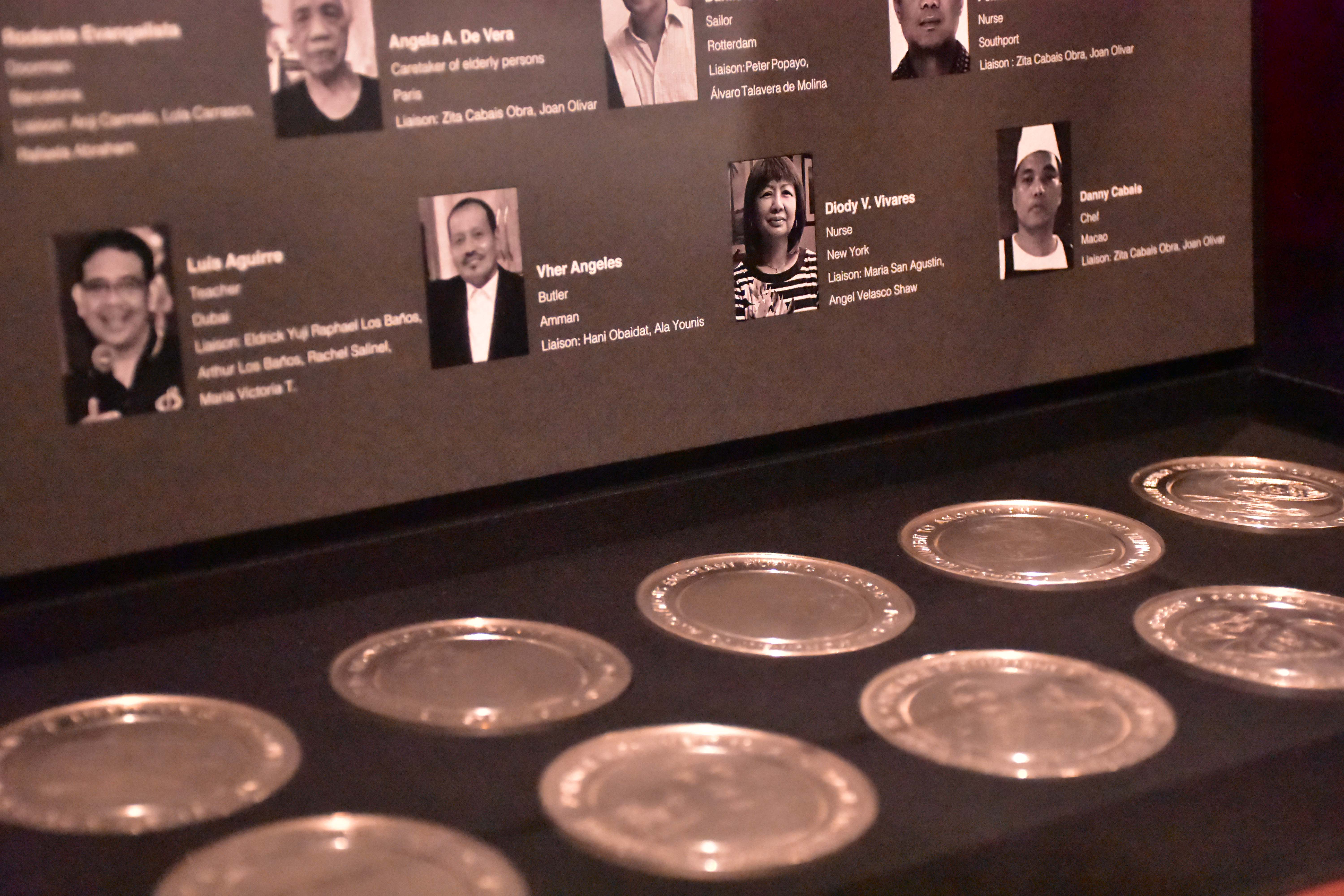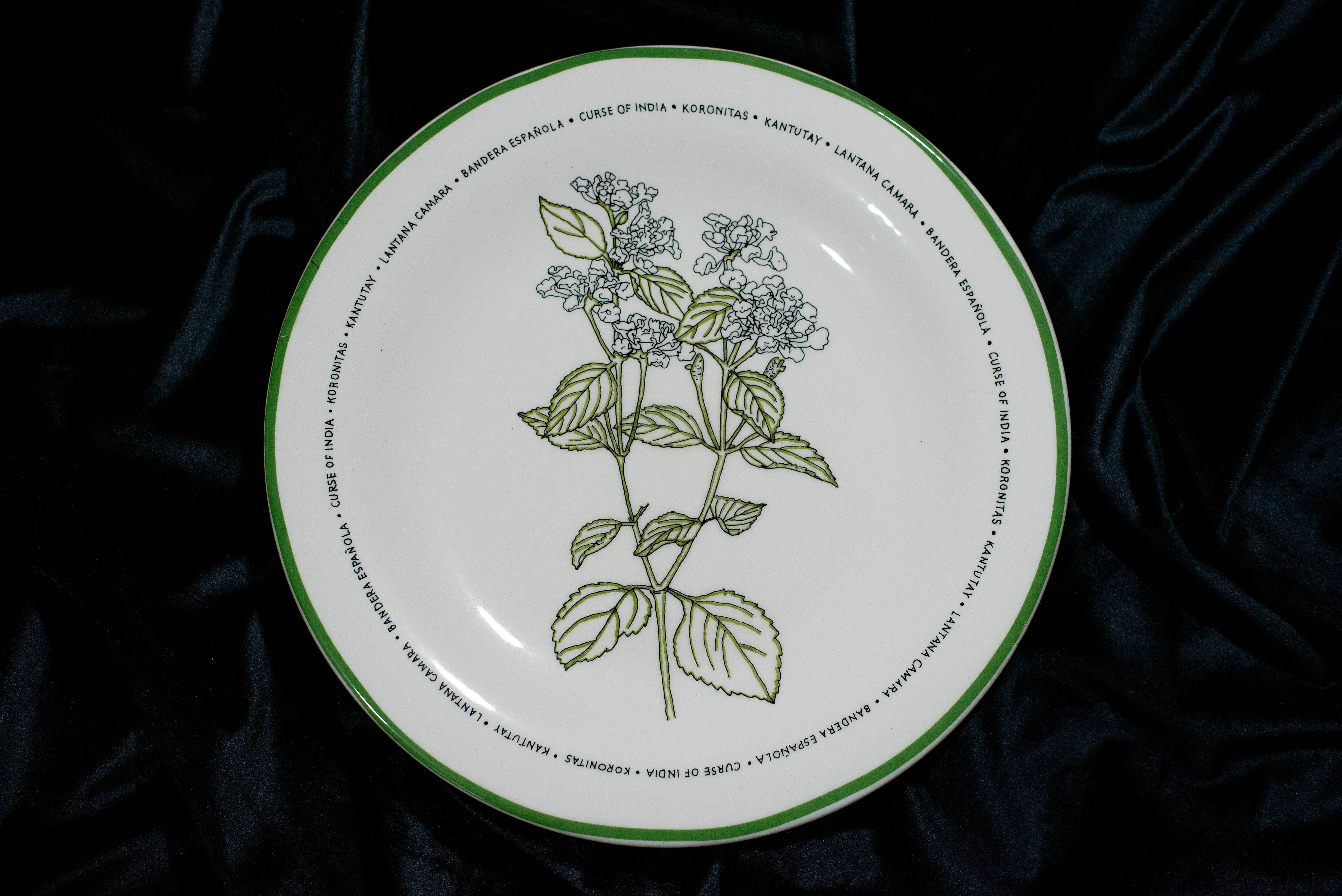At the Ateneo Art Gallery, the second iteration of Muntadas: Exercises on Past and Present Memories stands at an impressive scale. The exhibition takes up an entire wing of the third floor, spanning four interconnected rooms. Nearing the entrance, you are greeted with wall text of critical essays discussing the exhibition as well as a long list of acknowledgements. Inside the dark gallery rooms, another world appears to materialize. Objects—a set of plates, large woven fabrics, coins—gleam with historical significance as you are led to reconsider the links between the material and its histories.
Resulting from a period of archival research after the artist first visited the country in 2019, Antoni Muntadas’s latest project is a lofty undertaking: it features collaborations from eleven institutions and museums between the Philippines and Spain, as well as translation work, interviews, and all sorts of objects and mediums. Returning to the AAG after it was first displayed in 2021, this is a project that refuses to shy away from ambition. Instead, it channels its daring scope to elucidate on similarly potent themes: the intricate bonds of culture and colonialism, memory and material, translation and transnationality.
Muntadas has always been a creature of ambition. The Barcelona-born artist has the kind of resumé that challenges even the most seasoned biographers. Often working in a highly conceptual mode, Muntadas’ projects address what he calls a “media landscape,” a term he coined to describe the shifting contexts and perceptions brought about by our current multimedia culture. His works, from his public art experiments to more site-specific and video engagements, look to this landscape as a hinge for probing the intersections of the big ideas of language, power, culture, and history. Over the course of his half a century-long career, Muntadas has exhibited around the world, pursued a gamut of artistic and critical investigations, taught in various universities, and even collaborated with CERN as a guest artist in 2016.
Exercises on Past and Present Memories is Muntadas’ first show at the Philippines; it registers not with a sense of outsider remoteness, but with a deep-seated attentiveness and familiarity to history and material. This has a lot to do with the collective labors at play and all the agents from different institutions working to make the vision come alive: from sourcing the fabrics and objects, translating texts, interviewing OFWs, to setting up the video installations.
The exhibition focuses on three traded objects and Muntadas’ reinterpretation of them in an attempt to bridge the past and the present. The Manila Shawl from China, also known as the mantón, is reworked to depict scenes from Philippine history, which are digitally imprinted on each shawl. These manipulated mantón also work to bring to the forefront its indigenous origins: collaborating with weavers from Lumban, Laguna and India, Muntadas sought to integrate both local and imported materials. In effect, these reworked mantón trace both in their weaving and in their displayed narratives the transnational histories which form the backbone of national culture.
Elsewhere, in the section called Portable Monument to Anonymous Emigrant Filipino Workers, Muntadas reinscribes currency into a communal object, bringing to the forefront narratives of Filipinos living overseas otherwise kept at the margins. Cast in silver, the material of the coins call to mind the circulation of precious metals during the Spanish colonial period. Portable by nature, these coins are reconfigured to feature the faces of OFWs, thus alluding to the critical flows of money and remittances coming from overseas workers which underpin much of the Philippine economy.
Among the sections of the show, most absorbing is Malas hierbas, which catalogs nine invasive plant species introduced to the Philippines via the Americas by presenting them in plates assembled in Sevilla, Spain. These plants are recast as tableware, rendering their wildness alongside a kind of fragility, further displacing their point of origin. Here, Muntadas plays with tension while injecting a narrative about colonialism, migration, and ecology. In an exhibition that sometimes feels like attending a Philippine history lecture, Malas hierbas brings in a welcome dose of oddity.
Making one’s way through the exhibit—moving through different impressions of material and what they invoke in memory—is ultimately an exercise in recognizing history as a dynamic force. It shapes us in ways we are often unaware of, lingering quiet amid the shadows, waiting for us to bring it to light.
Muntadas: Exercises on Past and Present Memories is on view at Ateneo Art Gallery until July 29.
Sean Carballo is a writer and undergraduate from the Ateneo de Manila University.
Images courtesy of Clefvan Pornela.




